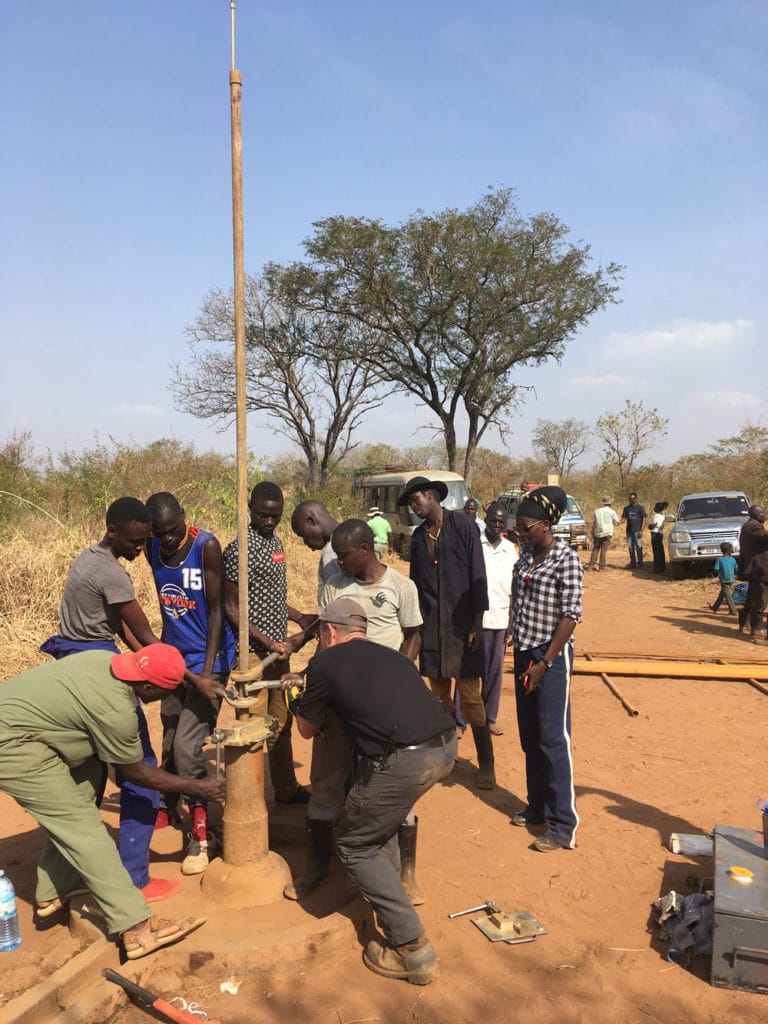Last Friday we had a very long day. We drove from Gulu to north of Kitgum, over 2 hours. It’s amazing how much the temperatures and surroundings change over that distance. It was at least 5 degrees hotter (celsius for the Americans reading), and there was very little shade to be found.
From a water point of view, conditions are much harsher than near Gulu. Around Gulu, water is usually present around 3 m depth below surface, certainly never below 10 m. (Of course, there are other factors that affect well production and water quality – water depth isn’t the only factor). But at our site north of Kitgum, the water was deeper than 35 m. This has a few implications – wells that deep require a drill rig as they cannot be dug with hand equipment. That means they are much more expensive, which means fewer can be drilled, which means they will be further apart. Around Gulu, walking more than 500 m for water is mostly unheard of. If nearby wells are broken, people just dig a spring and use that for water. Up north, however, walking several kilometres one way is pretty standard. Also, pumping these wells takes a lot more work since the water must be lifted so far through the pipe. That also gives the water more opportunity to get contaminated, especially if the pipe is rusty galvanized steel. Needless to say, keeping the existing wells in this area functional is critical to the livelihoods of the people living there.
When we arrived at the site we found the well to be working, but with very low flow. Likely there were leaks along the 45 m of rusty pipe. There was still a lineup of people to fill jerrycans, though, because they didn’t have any alternative water source. The repair (and our resistivity line) went smoothly, but took a long time because of the depth and the heat.
To show their appreciation, local villagers gave us a goat and a few chickens for lunch. These were slaughtered about 10 m from the well, right along our resistivity survey. A bit grim, but tasty lunch. There were also hundreds of stick bugs around, crawling up peoples’ legs all day!
At the end of the day, we had the well working pretty smoothly. A cow showed up out of nowhere to fill up on some much needed water. We did a few water quality tests but were in a hurry to get on the road – it was late and we were far from home. It’s a bit of a shame to leave so quickly, with not much ability to follow up and make sure all our work continued to pay off, but things seemed to at least be a little improved.
As an epilogue to the day, one of our vehicles (the van, not the bus, luckily) broke down almost immediately. They heard a clunk, then from the bus we saw one of the front wheels was at a 45 degree angle. After a couple hours of moving equipment to the bus roof, cramming all the people from the van onto the bus, and fixing the axle / suspension on the van with some rope, we limped our way home. We arrived around 10 pm, and surprisingly the patched together van made the trip, no problem.






